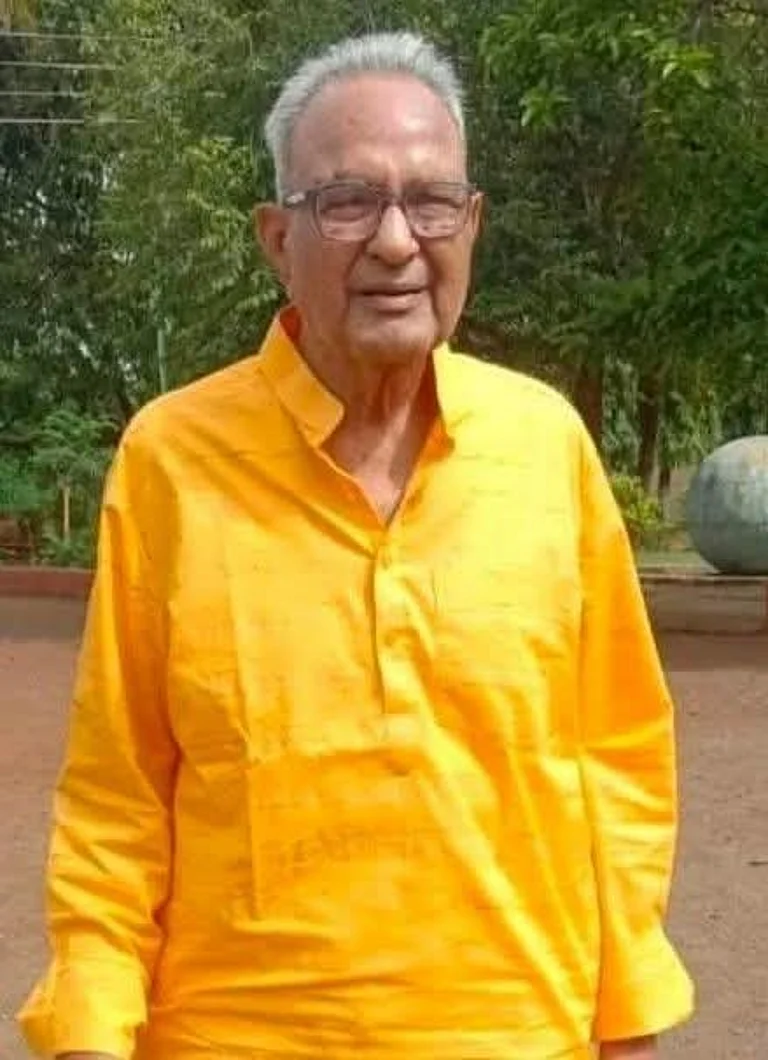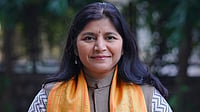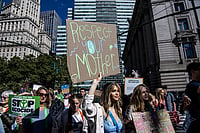Gender inequality is an unfortunate truth in every industry. But nowhere is it as vicious and sharply visible as in the journalism and media industry.
India is presently at the 150th position on the Press Freedom Index 2022 by Reporters Without Borders (RSF), a whopping 17-point fall from its ranking in 2016. That's not a cushy place, to begin with. On top of that, women or non-binary persons working in today's polarised media landscape face the double burden of not just journalistic repression and censorship but also sexist trolling and online abuse.
The worst of it is faced by women who put forth contrarian views against patriarchal norms, call out those in power including the government for their lapses and failures, and are generally unapologetic about sharing their views.
What is online harassment/abuse?
From gender-based attacks targeting women such as sexist jokes, threats of sexual and physical violence and murder, hate campaigns to more specific attacks like doxxing, surveillance/stalking, and dissemination of intimate pictures (including morphed/doctored images as well), online abuse can look like many things for women in journalism.
Unbridled usage of social media and easy access to internet has made hurling abuses at women journalists even easier. With the popularity of social media, unauthorized access to journalists’ personal accounts allows many to access and share their personal details for malicious purposes.
All of these tactics can and are used to prevent women journalists from speaking the truth or to invalidate their work and deny them the platform to influence their audiences.
Here’s a brief account on some of the myriad sources of online abuses and harassments that our fellow women journalists often encounter.
Public threats on social media platforms
Social media platforms are the most convenient, effective, and easily accessible tool available for threatening and abusing, and maligning journalists for their work. The threats very often include physical or sexual violence.
Doxxing/ Stalking/Surveillance
The ease of access to information on the internet often poses a serious threat to women journalists’ safety. The term ‘doxxing’ refers to the public dissemination of a woman’s personal information (i.e e-mail, contact, residential address) with questionable intent and often without her consent.
Surreptitious monitoring of journalists' online activities through modern technology is yet another problem.
Dissemination of intimate/ sexual images
This involves sharing of sexual or intimate images of a woman journalist without her knowledge. This action often causes serious psychological and reputational damages.
Hacking
This happens when someone gains unauthorised access to a journalist's private accounts or devices through malicious means. Hacking accounts and blackmailing are very common means of intimidating women online.
Indian women journalists in trouble: Both online and offline
Be it online abuse or physical attacks, women journalists in India have always paid the price for doing their job. In the past few years, several women journalists have been heckled or attacked while reporting from major events like women’s anti-CAA protests in Shaheen Bagh, Delhi violence, and farmers’ protests in Punjab to the controversy regarding entry of women devotees to the Sabarimala shrine in Kerala.
The most widely known example of online abuse and harassment of an Indian women journalist is the countless circulation of faked porn video of investigative journalist Rana Ayyub on April 2018 for reporting on the rape of an 8-year-old Kashmiri girl. The video made rounds on social media feeds and was circulated by thousands including several fan pages of BJP leaders.
“My image was morphed on a porn video, it was circulated by thousands including fan page of BJP leaders. I gave links and messages of the right wingers who gave me explicit death and rape threats to Delhi police, and recorded statement before magistrate. Case SHUT”. Ayyub tweeted
Ayyub has been subjected to countless misogynistic and sectarian attacks online by far-right Hindu nationalist groups a number of times. Each time, the sole objective was to discredit and humiliate the journalist whose voice loudly echoed dissent.
Rana Ayyub gained recognition in 2016 after authoring Gujarat Files: Anatomy of a Cover Up, a book delineating 2002 Gujarat violence that left at least 790 Muslims and over 250 Hindus dead. In her book, Ayyub condemned PM Modi, the then chief minister of Gujarat and his allies of being complicit in the anti-Muslim violence.
In another incident, on October 2020, Anuradha Bhasin, a voice widely known for her advocacy for press freedom in Kashmir, was allegedly assaulted by the brother of a legislator.
Soon after she raised her voice against the incident alleging that the ‘goons were acting in connivance with the government estates department and some police personnel’, the office of her newspaper, Kashmir Times, was sealed by the police.
In June last year, Police of the PM Modi’s constituency Varanasi filed a case against Supriya Sharma, executive editor of the news portal Scroll, for her ground reports regarding the effects of the government’s Covid-19 response on common people. She was charged with “printing or engraving matter known to be defamatory.”
Muslim journalist ‘auctioned’ on Bulli Bai app
In a shocking incident, on January 1 this year, a journalist from Kashmir, Quratulain Rehbar woke up to a frantic phone call from her friend who saw her photo on the screenshots of Bulli Bai “online auction” listings making rounds on social media. Rehbar, who had previously reported on the “Sulli Deals” auction in July last year, told Al Jazeera she was shocked to see her photograph on the app.
“When I saw my photograph, my throat got heavy, I had goosebumps on my arms and I was numb. It was shocking and humiliating,” she told mediapersons. She was one of many Muslim women who found themselves on the app. Three persons were later arrested in connection to the case.
No country for women journos
According to a recent UNESCO-ICFJ survey, ‘73 per cent of women journalists surveyed reported having faced online violence while doing their job’ while in the World Press Freedom Index, RSF has stated that a 35 per cent rise has been observed in the rate of imprisonment of women journalists for their work worldwide. It is absolutely undeniable that pressures and challenges to women journalists across the globe are at an all-time high.
In a bid to raise public awareness about the safety of women journalists, on the occasion of International Women’s Day 2022, UNESCO launched the awareness-raising campaign “Online violence against women journalists harms everyone. Let’s end it!”.
In 2019 as well UNESCO organised a conference to address the rising trend of online violence against women journalists in cooperation with Members of the Group of Friends for the Safety of Journalists at UNESCO that brought together over 200 Member State representatives, journalists and legal professionals.



























